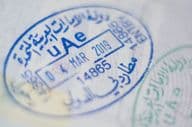Emirates Islamic Bank Streamlines with Branch Closures

Emirates Islamic Bank to Close Five Branches: What's Behind the Decision?
Emirates Islamic Bank—a subsidiary of Emirates NBD Group, one of Dubai's leading financial institutions—has announced the closure of five of its branches in the United Arab Emirates. The decision is driven not by financial difficulties but by the rise of digitalization, the need to increase efficiency, and the flexibility to adapt to customer demands.
Branch Closures in Favor of Digital Transition
Emirates Islamic currently operates 45 branches in the country, five of which are set to close by the end of the year. According to the bank's vice president, the move is not merely about cost-cutting: "We are rationalizing our branch network as technology increasingly takes over. However, we do not want to eliminate physical presence altogether." This indicates that while digital channels are prioritized, in-person service remains important—just in a more efficient and differently allocated manner.
The decision also responds to changing banking habits. UAE residents increasingly manage their finances online, using mobile banking to transfer funds, open accounts, or submit loan applications. Younger generations almost exclusively use digital channels to interact with financial institutions, and even older demographics are becoming increasingly open to this shift.
No Job Layoffs Involved
A key element of the decision is that the bank, despite branch closures, will not lay off employees. The leadership states that retaining talent is a strategic goal, and skilled workers will continue to be employed in other roles, whether in new branches or digital development teams.
Such an approach is rare in the financial sector. For many other banks, branch closures are synonymous with layoffs, but Emirates Islamic has chosen a different path: ensuring experienced professionals remain in the system through internal reallocation.
Strong Financial Background and Ambitious Vision
The decision is not the result of financial duress. Quite the opposite: Emirates Islamic achieved a pre-tax profit of 3.2 billion dirhams in the first nine months of 2025, with total revenues of 4.5 billion dirhams, representing a 9% annual growth.
The bank's capital adequacy ratio stands at 18.8%, outstanding in the region, indicating financial stability and even a liquidity surplus. This allows the bank to channel the operating costs of closed branches into technological advancements, thereby strengthening online and mobile banking services.
The Dynamic Growth of the Islamic Banking System
Emirates Islamic Bank bases its strategy not only on digital transition but also on the dynamic growth of the UAE's Islamic banking market. Recent forecasts suggest the Islamic banking sector could reach 352 billion dollars by 2029, while the sukuk market—Islamic bonds market—could expand from 100 billion to 175 billion dollars.
This rapid growth presents clear opportunities for the bank, particularly in the corporate banking segment. According to the vice president, their goal is to capture shares from competitors' customer bases, leveraging digital assets and artificial intelligence (AI).
AI and Digitalization Play a Key Role
Future plans include accelerating AI integration. Using artificial intelligence enables personalization of customer experiences, speeding up transactions, fraud prevention, and development of automated customer service systems.
The bank aims for technology to become not merely an adjunct but a central element of financial services. This direction aligns with global trends: international financial institutions increasingly rely on digital platforms, especially in developing nations where internet penetration is rapidly increasing.
Strategic Thinking Behind Branch Closures
The vice president clarified that several of the branches set for closure are so-called "legacy" units, older branches located geographically close to other Emirates NBD or Emirates Islamic units. With fully integrated back-end systems, eliminating overlaps, and reallocating resources seem logical.
In the future, the bank does not rule out opening branches in new locations—such as regions where it is not yet strongly represented but shows market potential.
Summary
Emirates Islamic Bank's decision aligns well with the modernization direction of the UAE financial sector. The rationalization of the branch network is not a step back but a step forward: fewer, but more strategically placed physical units, more digital channels, AI-driven services, and personalized customer experiences.
For customers, this implies fewer queues, faster service, and more accessible digital services in the future—all while the bank retains its workforce. Emirates Islamic is not merely rationalizing but consciously transforming, and thus becoming a model of modern banking in the United Arab Emirates.
(Source: Emirates Islamic Bank press release.)
If you find any errors on this page, please let us know via email.


